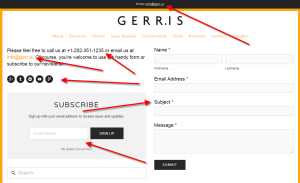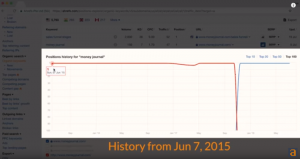A company’s telecoms system plays a strategic role in business performance – but how resilient is yours? Find out how SIP trunking can help.

The C-Factor
As a professional services organisation, you probably pay a lot of attention to the following key factors:
- Compliance – conformance to key legislations, such as the Data Protection Act
- Communication – being able to communicate with clients whenever necessary
- Confidence – ensuring clients have confidence in the way your business operates
- Customer service – providing high levels of customer service at all times
- Cost – reducing operational costs wherever possible
- Competitiveness – maintaining staff productivity, and helping them to provide an efficient, cost-effective service
- Continuity – being able to remain operational at all times and retrieve any lost data quickly
Why telecoms should matter to your business
A lot of companies spend time, money and resources on ensuring that their IT systems are resilient, in order to maintain business continuity. Investing in data backup solutions to ensure they can restore lost files or applications should there ever be a problem. But fewer appreciate that a robust, reliable and resilient telecoms system is just as important to ensuring business continuity and minimising the impact any outage can have on your bottom line.
Imagine if an unexpected problem impacted your telecoms system:
- How long would it take to restore?
- How would you communicate with customers, clients and other parties?
- What impact would downtime have on your fee earners and the revenues they raise?
- How would downtime affect your customer service?
- What damage would a prolonged downtime have on your company’s reputation?
- How much potential business and revenue could be lost through downtime?
ISDN – can you rely on it?
Many organisations are still using ISDN lines for their telecoms provision, without realising that this could leave them vulnerable to the risk of downtime and associated loss of productivity should any unexpected incident occur. This is because the nature of ISDN’s means it’s exposed to a single point of failure. So, any issue preventing your staff from accessing an office, or a fault with the system itself can cause your business communications to come to a grinding halt.
Even with a comprehensive (and expensive) SLA, it could be hours before your telecoms system is restored. Can your business afford to be off the radar for so long?
SIP trunking – reliable and resilient
By mid-2014, there were more than 1.2 million SIP trunks in the UK.
More and more organisations are now opting for SIP trunking when it comes to their business telecoms. SIP trunking is becoming increasingly popular due to its many benefits when compared with traditional ISDN, including reduced costs and increased flexibility, however its resilience is what is setting it apart.
SIP trunking works by connecting your company PBX to the PSTN via a SIP provider’s network, using an IP connection (such as broadband or Ethernet).
With SIP trunking in place, the resilience of your telecoms network can be increased in several ways.
- If your business has multiple sites with ISDN connections into each, by deploying SIP trunking you are able to rationalise the number of ISDN lines that your business requires and also reduce the maintenance costs on all of your various PBXs. You can even retain one or two existing ISDN connections for additional continuity provision.
- With one centralised PBX, management of your entire telecoms system, including multiple sites, is far easier and changes can be made quickly and easily via an online portal.
- SIP trunking providers should also offer built-in disaster recovery services with their SIP. For example, for businesses that require a fast and effective disaster recovery provision, there is SIP with Active Standby. Active Standby involves provisioning an additional SIP trunk to an alternative office location. If disaster strikes at one site, telecoms traffic is automatically re-routed through the second SIP trunk, maintaining service for your customers.
- More enhanced disaster recovery provisions can provide two SIP endpoint connections, with each endpoint active to selected DDIs, while standby resilience is provided by the other endpoint. This offers additional failover.
SIP = security
Security and data protection are major issues for many organisations. SIP trunking can help make your telecoms system even more secure and enable you to conform with various data protection obligations. One of the easiest ways to achieve this is to choose a SIP provider which manages its own secure fibre network.
Takeaways:
- How resilient is your telecoms system? Find out how long it would take to restore your telecoms in the event of a disaster.
- How would downtime impact your business – cost, lost productivity?
- Learn how SIP trunking can make your business telecoms even more secure.
Discover how making the move from ISDN to SIP trunking could benefit your business by downloading: The Professional services guide to the benefits of a modern phone system
This first appeared on the Gamma blog.
(250)
Report Post





